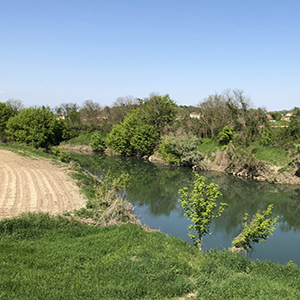Applying the Principal Component Analysis for a deeper understanding of the groundwater system: case study of the Bacchiglione Basin (Veneto, Italy)

All claims expressed in this article are solely those of the authors and do not necessarily represent those of their affiliated organizations, or those of the publisher, the editors and the reviewers. Any product that may be evaluated in this article or claim that may be made by its manufacturer is not guaranteed or endorsed by the publisher.
Authors
In hydrogeology, it is often difficult to fully understand the hydraulic factors affecting the recharge of groundwater systems. Particularly, at a regional scale, the groundwater system can have different drivers depending on the considered area, i.e., soil permeability, paleochannels, and precipitation. Chemicalphysical (i.e. temperature) or hydrogeochemical data can help such understanding. However, this type of information is usually sparse at the regional scale, whereas extended groundwater piezometric head monitoring is more common. This study aims at exploiting these longitudinal observations of the hydraulic head to validate (and possibly bring more insights into) the geological structural model of aquifer systems. Clustering control points based on the piezometric head average annual variations can help the system conceptualization in two ways: (i) clusters can geographically identify areas with similar hydrogeological behavior; and (ii) the typical cluster annual variation with its ups and downs can bring insights on the recharge component of an aquifer system. Nevertheless, visual clustering can be a long and subjective procedure, thus this study suggests the use of the Principal Component Analysis to cluster the control points with a similar average annual variation of their recorded time series. This study supports the proposed analysis by applying it to the monitoring data of the Bacchiglione basin resulting in (i) clusters identified based on the number, moment, and lengths of groundwater level peaks and minima, (ii) wellgathered clusters in space, underpinning the groundwater hydrograph dependence on local driving factors. Furthermore, the investigation of clustering anomalies highlighted the relevance of the presence of time series with different recording periods pinpointing, however, the method's capacity to spot a change in the hydrogeological cycle over the years.
How to Cite

This work is licensed under a Creative Commons Attribution-NonCommercial 4.0 International License.
PAGEPress has chosen to apply the Creative Commons Attribution NonCommercial 4.0 International License (CC BY-NC 4.0) to all manuscripts to be published.














